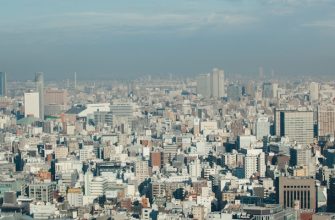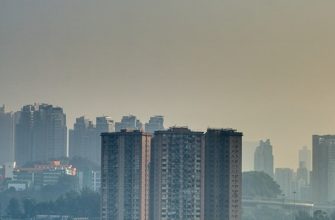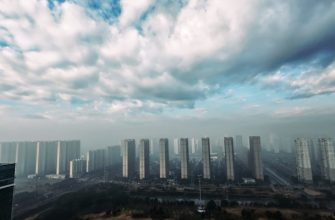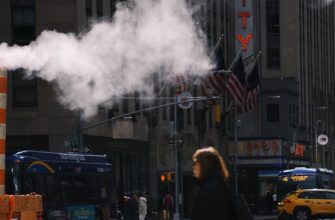- Harnessing Nature: Innovative Approaches to Urban Air Quality
- Green Spaces as Air Purifiers: The Role of Parks in Cities
- The Impact of Urban Forestry on Air Pollution Reduction
- Vertical Gardens: A Breath of Fresh Air in Urban Environments
- Community Initiatives: Engaging Citizens in Air Quality Improvement
- The Science Behind Natural Solutions for Cleaner City Air
Harnessing Nature: Innovative Approaches to Urban Air Quality
Urban air quality has become a pressing concern in many cities around the world. Improving air quality is essential for public health and environmental sustainability. Innovative approaches that harness nature are increasingly being recognized as effective solutions to combat urban pollution. These natural strategies not only enhance air quality but also contribute to the overall well-being of urban dwellers.
- Green Roofs: Implementing green roofs on buildings can significantly reduce air pollution. These living surfaces absorb carbon dioxide and other harmful pollutants, while also providing insulation and reducing urban heat.
- Urban Forests: Planting trees in urban areas serves multiple purposes. Trees act as natural air filters, capturing dust, pollen, and smoke particles, thus improving local air quality.
- Vertical Gardens: Vertical gardens, or green walls, can be integrated into urban architecture to purify the air. These installations not only enhance aesthetic appeal but also contribute to lowering temperatures and improving air conditions.
- Natural Water Bodies: Incorporating natural water features, such as ponds and wetlands, can help mitigate air pollution. These ecosystems support biodiversity while also aiding in the natural filtration of pollutants.
- Community Gardens: Establishing community gardens can foster local engagement and promote the cultivation of plants that improve air quality. These green spaces offer a refuge from urban stress and enhance the overall environment.
In conclusion, employing nature-based solutions is crucial for enhancing air quality in urban settings. These innovative approaches, which include green roofs, urban forests, and community gardens, demonstrate that harmonizing urban development with natural processes can lead to healthier cities. The integration of these strategies not only addresses air pollution but also fosters community well-being and environmental resilience.
Green Spaces as Air Purifiers: The Role of Parks in Cities
Green spaces play a crucial role in enhancing urban air quality. Parks and gardens act as natural air purifiers, significantly contributing to the overall environmental health of cities. These green areas absorb pollutants, such as carbon dioxide, nitrogen dioxide, and particulate matter, thus improving air quality for urban residents.
The presence of vegetation in urban settings facilitates various processes that enhance air purification. Trees, shrubs, and plants engage in photosynthesis, which not only produces oxygen but also captures harmful airborne particles. Moreover, the leaf surfaces of plants can trap dust and other particulates, further reducing pollution levels in the atmosphere.
- Carbon Sequestration: Green spaces absorb carbon dioxide, a major greenhouse gas, thus mitigating climate change effects.
- Oxygen Production: Through photosynthesis, parks contribute to the production of oxygen, which is vital for human health.
- Temperature Moderation: Vegetation helps to cool urban areas, reducing heat islands and contributing to a more comfortable living environment.
- Noise Reduction: Parks can act as sound barriers, decreasing noise pollution in dense urban landscapes.
In addition to their air-purifying capabilities, parks provide essential recreational spaces for communities. They offer opportunities for physical activity, relaxation, and social interaction, all of which contribute to improved mental health and well-being. Furthermore, well-maintained green spaces enhance property values and can attract tourism, benefiting local economies.
Implementing more green spaces in urban planning is vital for promoting sustainable cities. As cities continue to grow, prioritizing parks and green areas will help address air quality issues while creating healthier environments for all urban inhabitants. In summary, the integration of parks into urban landscapes serves not only as an effective strategy for air purification but also as a means to foster community well-being and environmental sustainability.
The Impact of Urban Forestry on Air Pollution Reduction
Urban forestry plays a crucial role in mitigating air pollution in cities. Trees and green spaces act as natural filters, absorbing harmful pollutants and improving overall air quality. The presence of urban trees can significantly reduce levels of carbon dioxide, particulate matter, and other harmful gases, creating a healthier environment for city dwellers.
- Absorption of Pollutants: Trees absorb carbon dioxide and other pollutants through their leaves, effectively cleaning the air.
- Temperature Regulation: Urban forests help to lower temperatures, which can reduce the formation of ground-level ozone, a harmful air pollutant.
- Dust and Particulate Matter Capture: Foliage traps dust, pollen, and particulate matter, reducing the amount of these harmful substances in the atmosphere.
- Enhancing Biodiversity: Urban greenery supports biodiversity, which contributes to healthier ecosystems that can better manage air quality.
Furthermore, urban forestry initiatives can create a sustainable framework for air quality improvement. By strategically planting trees in urban areas, cities can maximize their air-cleansing benefits. This not only enhances public health but also promotes community well-being and environmental sustainability.
In conclusion, the integration of urban forestry into city planning is essential for reducing air pollution. By leveraging natural solutions, cities can improve air quality while providing numerous additional benefits, including aesthetic enhancements and increased recreational spaces for residents.
Vertical Gardens: A Breath of Fresh Air in Urban Environments
Vertical gardens, often referred to as living walls, represent an innovative solution for enhancing air quality in urban environments. These green installations not only beautify cityscapes but also play a crucial role in improving the surrounding atmosphere. By incorporating a variety of plant species, vertical gardens can effectively filter pollutants and absorb carbon dioxide, transforming the air into a healthier resource for city dwellers.
Urban areas typically suffer from high levels of air pollution due to traffic emissions, industrial activities, and limited green spaces. Vertical gardens serve as an effective buffer against these pollutants, as plants naturally absorb harmful substances and release oxygen, contributing to a cleaner and more breathable environment. Furthermore, these gardens can help mitigate the urban heat island effect, providing a cooler microclimate in densely populated areas.
- Improved air quality through natural filtration
- Reduction of urban heat island effect
- Enhanced aesthetic appeal of city landscapes
- Increased biodiversity in urban settings
- Promotion of mental well-being among residents
In addition to their environmental benefits, vertical gardens can also offer structural advantages for buildings. They provide insulation, reducing energy costs, and can help manage stormwater runoff. The incorporation of green walls into architectural designs not only supports sustainability but also demonstrates a commitment to creating healthier urban spaces.
As cities continue to expand, the implementation of vertical gardens will become increasingly vital. These green solutions not only address air quality issues but also encourage the integration of nature into urban life. By fostering a connection between residents and the environment, vertical gardens emerge as a key element in the pursuit of sustainable urban development.
Community Initiatives: Engaging Citizens in Air Quality Improvement
Community initiatives play a crucial role in enhancing air quality in urban environments. Engaging citizens in activities aimed at improving air quality fosters a sense of responsibility and ownership towards environmental health. Such initiatives not only empower residents but also create a collaborative atmosphere for achieving clean air objectives.
- Awareness Campaigns: Educating the public about the sources and impacts of air pollution is vital. Campaigns can include workshops, seminars, and informational materials that emphasize the importance of air quality and how each individual can contribute to its improvement.
- Tree Planting Programs: Trees are natural air purifiers. Organizing community tree planting events encourages residents to actively participate in enhancing urban greenery, which in turn contributes to better air quality.
- Air Quality Monitoring: Involving citizens in monitoring air quality through simple tools and apps can provide valuable data. This data helps in understanding pollution patterns and mobilizing actions to address air quality issues.
- Clean-up Drives: Organizing clean-up drives in local parks and neighborhoods not only beautifies the environment but also reduces pollutants that contribute to poor air quality. Residents can come together to remove litter and promote a cleaner living space.
- Partnerships with Local Organizations: Collaborating with NGOs and local businesses can amplify efforts to improve air quality. Joint projects can be more impactful in raising awareness and funding for necessary initiatives.
By implementing these community-driven strategies, cities can significantly enhance air quality while fostering a stronger, more engaged citizenry. Such collaborative efforts ensure that air quality improvement is a shared goal, leading to more sustainable urban living.
The Science Behind Natural Solutions for Cleaner City Air
Urban air quality has become a pressing concern as cities continue to grow and industrialize. Natural solutions for cleaner city air are gaining attention for their effectiveness and sustainability. These solutions leverage the power of nature to combat air pollution, offering a holistic approach to improving urban environments.
The science behind these natural solutions is rooted in various biological and ecological processes. For instance, plants play a crucial role in filtering pollutants from the air. Through photosynthesis, they absorb carbon dioxide and release oxygen, which is essential for maintaining a healthy atmosphere. Additionally, certain species of trees and shrubs can trap particulate matter, reducing the concentration of harmful particles in the air.
- Air Purification: Trees and vegetation act as natural air purifiers, absorbing harmful gases and particulates.
- Urban Heat Reduction: Green spaces lower urban temperatures, which can decrease the formation of ground-level ozone, a key air pollutant.
- Biodiversity Enhancement: Introducing diverse plant life increases resilience against air pollution by fostering a balanced ecosystem.
- Community Well-being: Access to green areas contributes to improved mental health, encouraging outdoor activities that further support cleaner air initiatives.
Research indicates that urban areas with a higher density of greenery experience significantly lower levels of air pollution. Implementing natural solutions such as urban forests, green roofs, and vertical gardens not only improves air quality but also enhances the overall aesthetic and livability of cities. These methods provide an effective means to capture carbon emissions, thus playing a vital role in urban climate strategies.
Furthermore, community involvement in planting and maintaining green spaces fosters a sense of ownership and responsibility towards the environment. Educating residents about the benefits of natural solutions for cleaner city air can lead to greater participation in local initiatives, amplifying the positive impact on air quality.
In conclusion, embracing natural solutions for cleaner city air is not just an environmental imperative; it is a pathway towards healthier urban living. By understanding the science behind these methods, cities can implement strategies that mitigate air pollution and promote a sustainable future.








